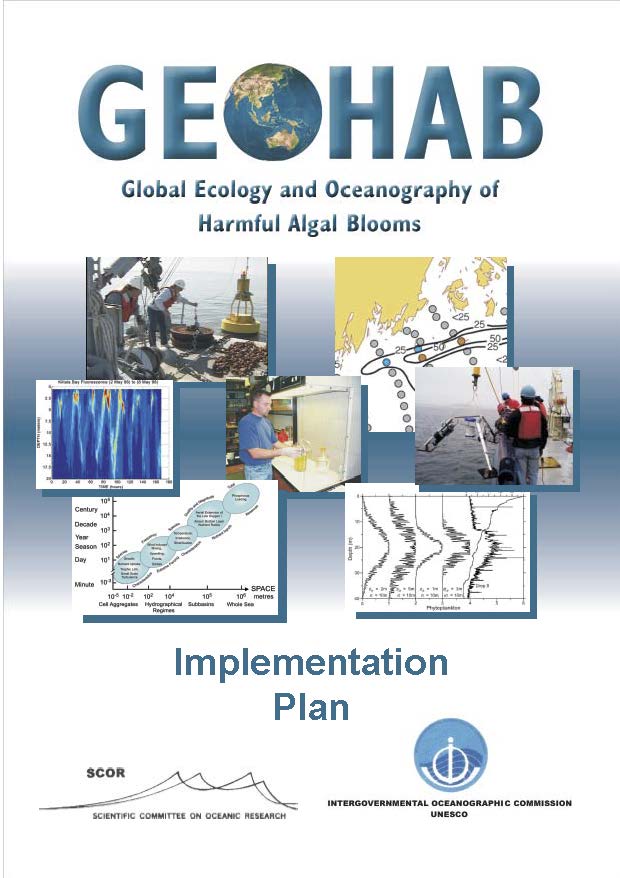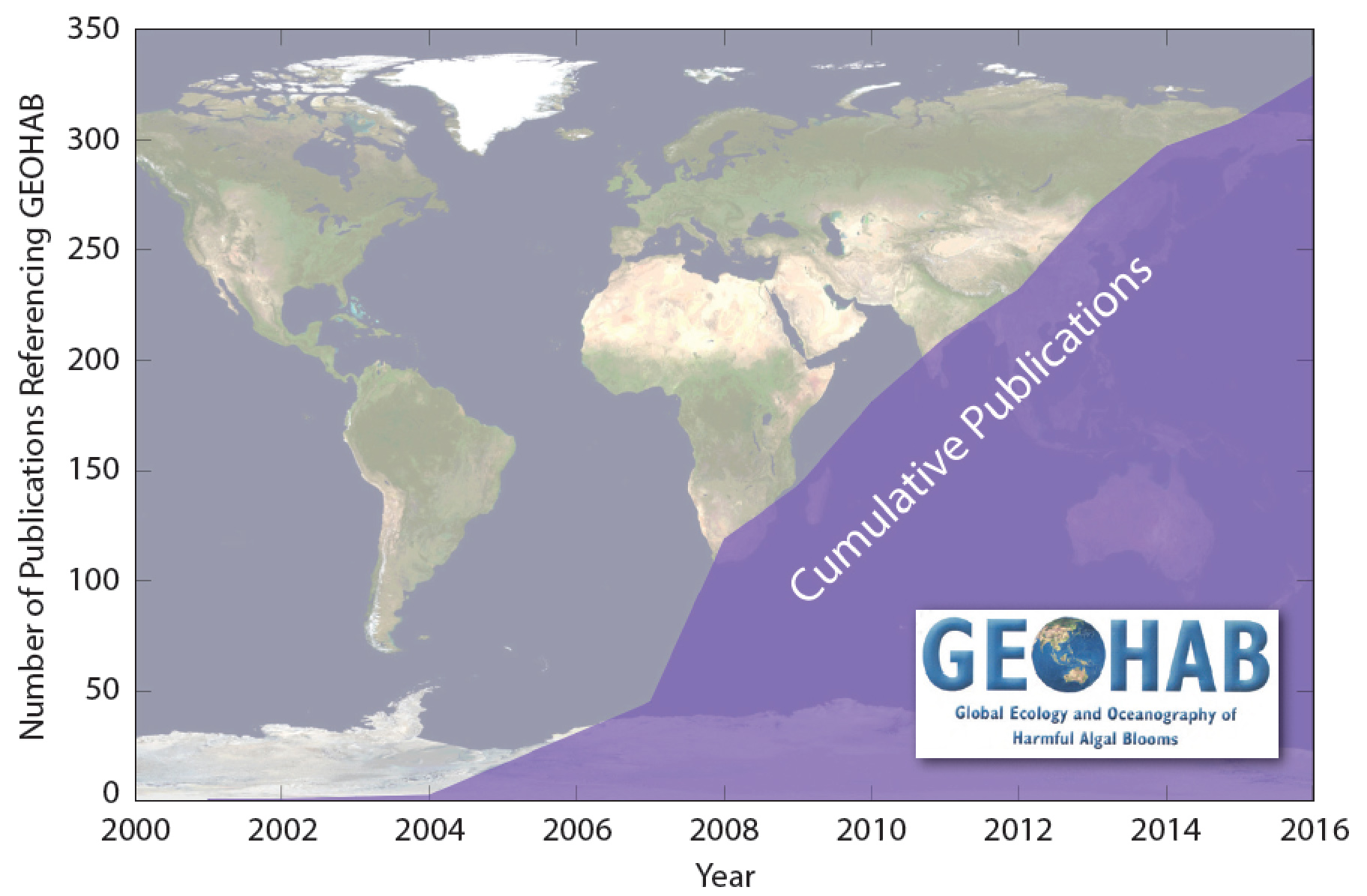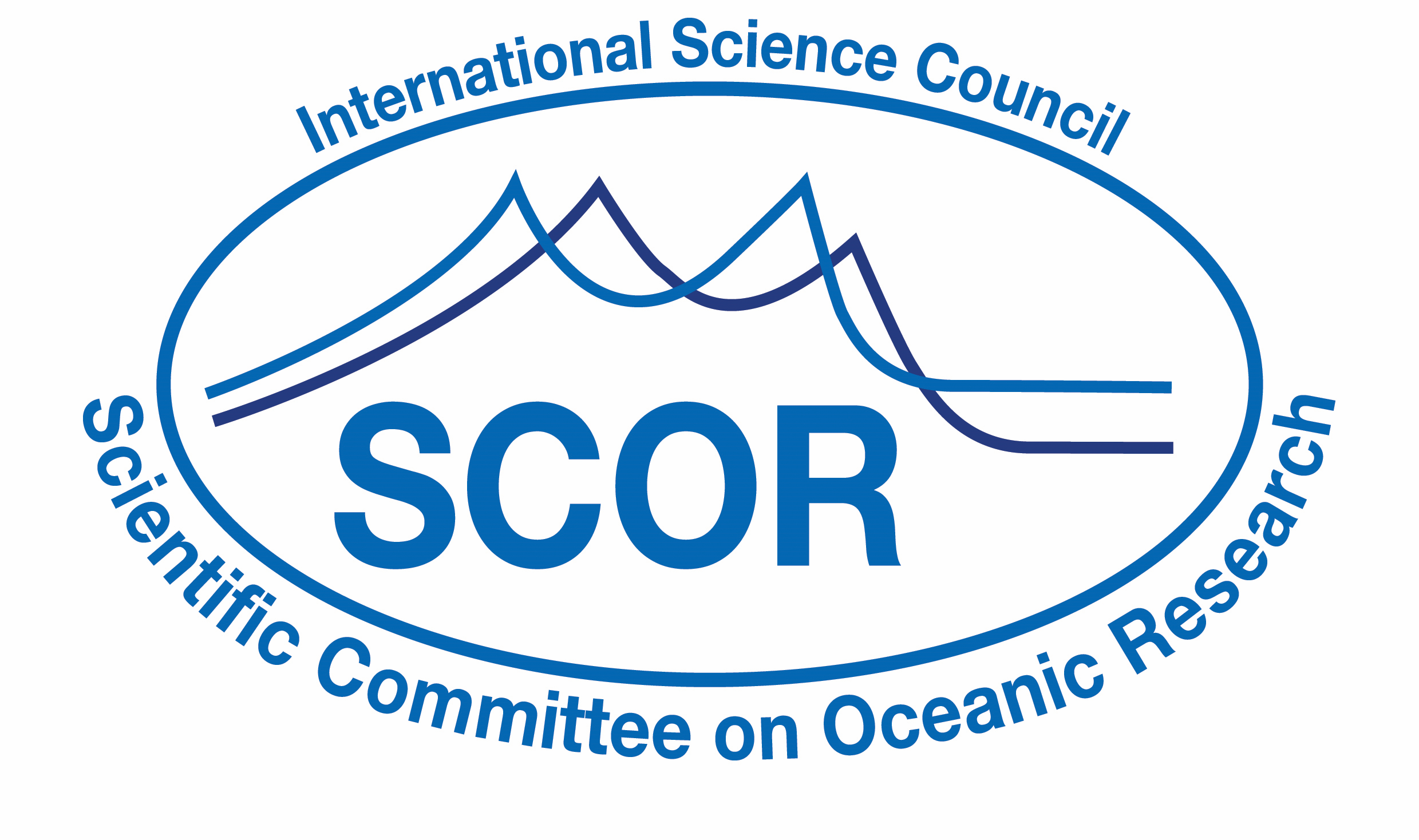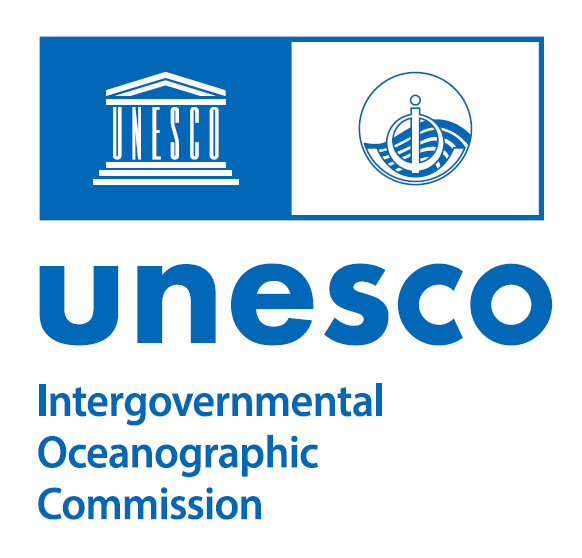files/HAB-Summary-Policy-Makerks-2015.pdfBelow GEOHAB publications presented by theme. A list by title is available here.
Science Plan Implementation Plan


Upwelling Systems
- Core Research Plan: HABs in Upwelling Systems
- Core Research Project Implementation Plan: HABs in Upwelling Systems
- Open Science Meeting on HABs in Upwelling Systems, Programme Book and Abstracts
Eutrophic Systems
-
Eutrophication and HABs: the GEOHAB approach. P. M. GLIBERT, ZHOU Mingjiang, ZHU Mingyuan, M. A. BURFORD. Special issue on the CHINESE JOURNAL OF OCEANOLOGY AND LIMNOLOGY, 中国海洋湖沼学报 (ISSN 0254-4059), Vol. 29, No. 4, pp. 719-916, 2011
- Core Research Plan: HABs in Eutrophic Systems
- Open Science Meeting on HABs in Eutrophic Coastal and Estuarine Systems, Programme Book and Abstracts
- Advisory Bulletin of the GEOHAB SSC on Urea Fertilization (PDF)
-
Special GEOHAB issue of the Elsevier Journal 'Harmful Algae' entitled ‘HABs and Eutrophication’. Available at Science Direct at http://www.sciencedirect.com/science/journal/15689883 . List of Contents also at http://www.ioc-unesco.org/hab/index.php?option=com_oe&task=viewDocumentRecord&docID=088
Fjords and Coastal Embayments
- Core Research Plan: HABs in Fjords and Coastal Embayments
- Open Science Meeting on HABs in Fjords and Coastal Embayments, Programme Book and Abstracts
Stratified Systems
- Advances and Challenges for Understanding Physical-Biological Interactions in HABs in Stratified Environments
- Core Research Plan: HABs in Stratified Systems
- Open Science Meeting on HABs in Stratified Systems, Programme Book and Abstracts
Benthic Systems
GEOHAB Asia
- Global Ecology and Oceanography of Harmful Algal Blooms in Asia: A Regional Cooperative Programme
- 2nd Regional Open Science Meeting, Programme Book and Abstracts
- 1st Regional Open Science Meeting, Abstracts
GEOHAB Baltic
Report of the ICES-IOC-SCOR Working Group on Implementation of GEOHAB in the Baltic
GEOHAB Modelling
GEOHAB Synthesis
- Special issue in Oceanography: International Cooperation on Harmful Algal Bloom Science
http://tos.org/oceanography/issue/volume-30-issue-01
GEOHAB–The Global Ecology and Oceanography of Harmful Algal Blooms Program: Motivation, Goals, and Legacy
Kudela, R.M., E. Berdalet, H. Enevoldsen, G. Pitcher, R. Raine, and E. Urban. 2017. GEOHAB–The Global Ecology and Oceanography of Harmful Algal Blooms Program: Motivation, goals, and legacy. Oceanography 30(1):12–21, https://doi.org/10.5670/oceanog.2017.106.
Harmful Algal Blooms in Eastern Boundary Upwelling Systems: A GEOHAB Core Research Project
Pitcher, G.C., A.B. Jiménez, R.M. Kudela, and B. Reguera. 2017. Harmful algal blooms in eastern boundary upwelling systems: A GEOHAB Core Research Project. Oceanography 30(1):22–35, https://doi.org/10.5670/oceanog.2017.107.
Harmful Algal Blooms in Benthic Systems: Recent Progress and Future Research
Berdalet, E., P.A. Tester, M. Chinain, S. Fraga, R. Lemée, W. Litaker, A. Penna, G. Usup, M. Vila, and A. Zingone. 2017. Harmful algal blooms in benthic systems: Recent progress and future research. Oceanography 30(1):36–45, https://doi.org/10.5670/oceanog.2017.108.
Harmful Algal Blooms in Fjords, Coastal Embayments, and Stratified Systems: Recent Progress and Future Research
Berdalet, E., M. Montresor, B. Reguera, S. Roy, H. Yamazaki, A. Cembella, and R. Raine. 2017. Harmful algal blooms in fjords, coastal embayments, and stratified systems: Recent progress and future research. Oceanography 30(1):46–57, https://doi.org/10.5670/oceanog.2017.109.
Globally Changing Nutrient Loads and Harmful Algal Blooms: Recent Advances, New Paradigms, and Continuing Challenges
Glibert, P.M., and M.A. Burford. 2017. Globally changing nutrient loads and harmful algal blooms: Recent advances, new paradigms, and continuing challenges. Oceanography 30(1):58–69, https://doi.org/10.5670/oceanog.2017.110.
GlobalHAB: A New Program to Promote International Research, Observations, and Modeling of Harmful Algal Blooms in Aquatic Systems
Berdalet, E., R. Kudela, E. Urban, H. Enevoldsen, N.S. Banas, E. Bresnan, M. Burford, K. Davidson, C.J. Gobler, B. Karlson, P.T. Lim, L. Mackenzie, M. Montresor, V.L. Trainer, G. Usup, and K. Yin. 2017. GlobalHAB: A new program to promote international research, observations, and modeling of harmful algal blooms in aquatic systems. Oceanography 30(1):70–81, https://doi.org/10.5670/oceanog.2017.111.
Others
- Ocean colour remote sensing and Harmful Algal Blooms: a rush of blood?
- GEOHAB: Global Ecology and Oceanography of Harmful Algal Blooms, A Plan for Co-ordinated Scientific Research and Co-operation to Develop International Capabilities for Assessment, Prediction and Mitigation. Report from a Joint IOC / SCOR Workshop, Havreholm, Denmark,13 - 17 October 1998.
- UNESCO monographs on oceanographic methodology: Real-time Coastal Observing Systems for Marine Ecosystem Dynamics and Harmful Algal Blooms: Theory, Instrumentation and Modelling. HABWatch Monograph from UNESCO Publishing. Edited by Marcel Babin, Collin Roesler and John Cullen. The proliferation of harmful phytoplankton in marine ecosystems can cause massive fish kills, contaminate seafood with toxins, impact local and regional economies and dramatically affect ecological balance. Real-time observations are essential for effective short-term operational forecasting, but observation and modelling systems are still being developed. This volume offers guidance for developing real-time and near real-time sensing systems for observing and predicting plankton dynamics, including harmful algal blooms, in coastal waters. It explains the underlying theory and discusses current directions in research and monitoring in looking at instrumentation and modelling. Topics treated include: coastal ecosystems and dynamics of harmful algal blooms; theory and practical applications of in situ and remotely sensed optical detection of microalgal distributions and composition; theory and practical applications of in situ biological and chemical sensors for targeted species and toxin detection; integrated observing systems and platforms for detection; diagnostic and predictive modelling of ecosystems and harmful algal blooms, including data assimilation techniques; observational needs for the public and government; and future directions for research and operations. This anthology should inform the work of researchers and environmental monitors as well as teachers and trainers concerned with understanding the causes, predicting the occurrences and mitigating the effects of harmful algal blooms in marine ecosystems.
- Scientific Summary for Policy Makers: http://hab.ioc-unesco.org/index.php?option=com_content&view=article&id=49:harmful-algal-blooms-for-policy-makers&catid=11:geohab
List of papers published based on GEOHAB endorsed research (download as End-note zip file)


